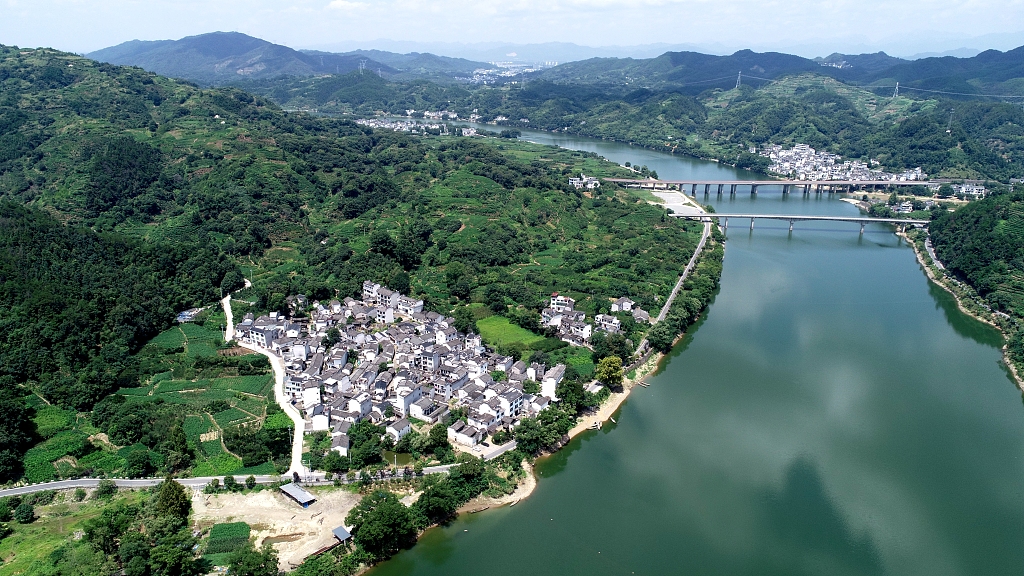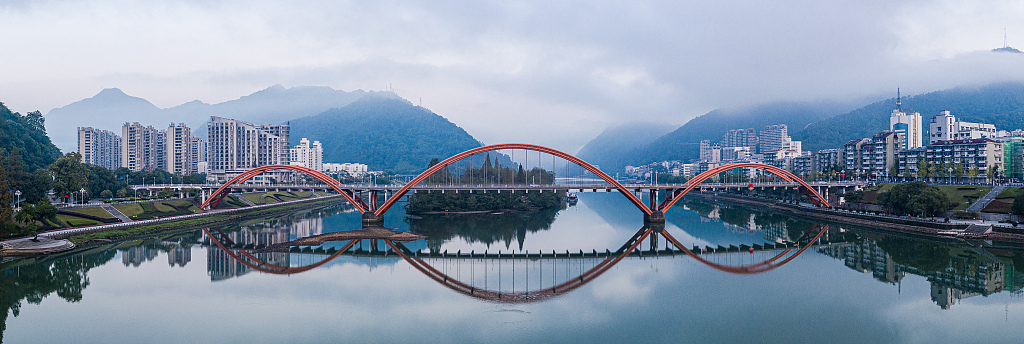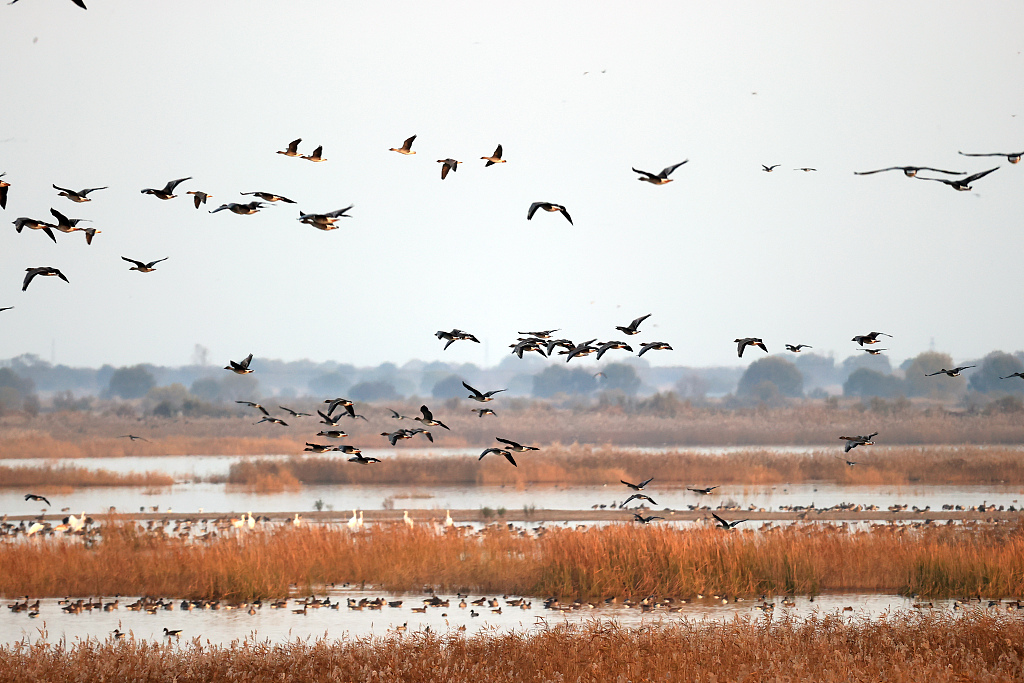
Xin'an River in Shexian County of Huangshan City, east China's Anhui Province, July 30, 2019. /CFP
Xin'an River in Shexian County of Huangshan City, east China's Anhui Province, July 30, 2019. /CFP
The Xin'an River originates from Yellow Mountain, a UNESCO World Heritage Site in Anhui Province, and runs to the coastal province of Zhejiang in east China. As an important ecological barrier of the Yangtze River Delta, automatic monitoring stations were built every six kilometers along the 242-kilometer-long river.
With the new system, the river's protection has turned from periodical monitoring to real-time supervision. "We can learn the city's water quality at every monitored section through an information platform, and get the real-time data every two to four hours," said Chen Xin, deputy director of the Xin'an River Protection Center.
Since the 18th National Congress of the Communist Party of China (CPC) in 2012, China has made unprecedented efforts on its construction of ecological civilization. Documents such as the Integrated Reform Plan for Promoting Ecological Progress and Opinions on Improving Ecological Protection Mechanism were issued to promote the development of ecological compensation mechanisms.

Xin'an River in Hangzhou City, east China's Zhejiang Province, October 10, 2020. /CFP
Xin'an River in Hangzhou City, east China's Zhejiang Province, October 10, 2020. /CFP
The ecological compensation is an innovative institutional arrangement designed to prevent damage to the ecosystem and biodiversity. It is a new approach to environmental stewardship that relies on market-based mechanisms, or fiscal transfers, to motivate local governments and landholders.
The mechanism was piloted in 2011 on the Xin'an River, joined by Anhui, Zhejiang provinces. Thanks to the mechanism, water quality has remained at or above Grade II for many years, which means that it can be used as a source for drinking water for downstream residents in Zhejiang. For the past 10 years, Zhejiang paid Anhui a total of 5.7 billion yuan (about $790 million) in ecological compensation for the massive improvement in the water quality.
"We are gaining a lot from the improvement in the water quality. The village is attracting more tourists and the market prices of local agricultural products have also increased," said Yao Shunwu, Party secretary of Damao Community, Shexian County, Huangshan City.
In 2019, Chinese President Xi Jinping called for more efforts to improve the ecological compensation mechanism and increase the transfer payment to support the protection of forests, grasslands, wetlands and key eco-function zones.
In September 2021, China released a guideline on deepening the reform of the country's ecological compensation mechanism to speed up the progress in ecological preservation, which details measures for the country to realize long-term ecological compensation goals set for 2025 and 2035.

Migratory birds gathering in the Yellow River Delta, Dongying City, east China's Shandong Province, September 16, 2021. /CFP
Migratory birds gathering in the Yellow River Delta, Dongying City, east China's Shandong Province, September 16, 2021. /CFP
The Yellow River Basin is one of 13 cross-regional river basins where the ecological compensation mechanism has been implemented. A total of 18 provincial regions are involved, according to the Ministry of Ecology and Environment.
Over the past decade, China has established an ecological compensation mechanism covering the largest population and areas with the most input in the world.
"The ecological compensation system has expanded from water ecological protection to regional development cooperation in an all-round way that involves economy, environment, society, culture and governance. The practices, expansion and upgrade fully demonstrate the great power of Xi Jinping's thought on ecological civilization," said Zhang Yongsheng, president of the Research Institute for Eco-civilization, Chinese Academy of Social Sciences (CASS).
China has also demarcated no less than 25 percent of its land area for ecological protection, established a protected areas system with national parks as the mainstay, and built its first batch of five national parks -- the Sanjiangyuan (the Three-River-Source) National Park, the Wuyi Mountain National Park, the Giant Panda National Park, the Northeast China Tiger and Leopard National Park and the Hainan Tropical Rainforest National Park over the past 10 years.
The country's forest stock volume has reached 194.93 trillion cubic meters, and its comprehensive vegetation coverage of grasslands has reached 50.32 percent.
(If you want to contribute and have specific expertise, please contact us at nature@cgtn.com)

